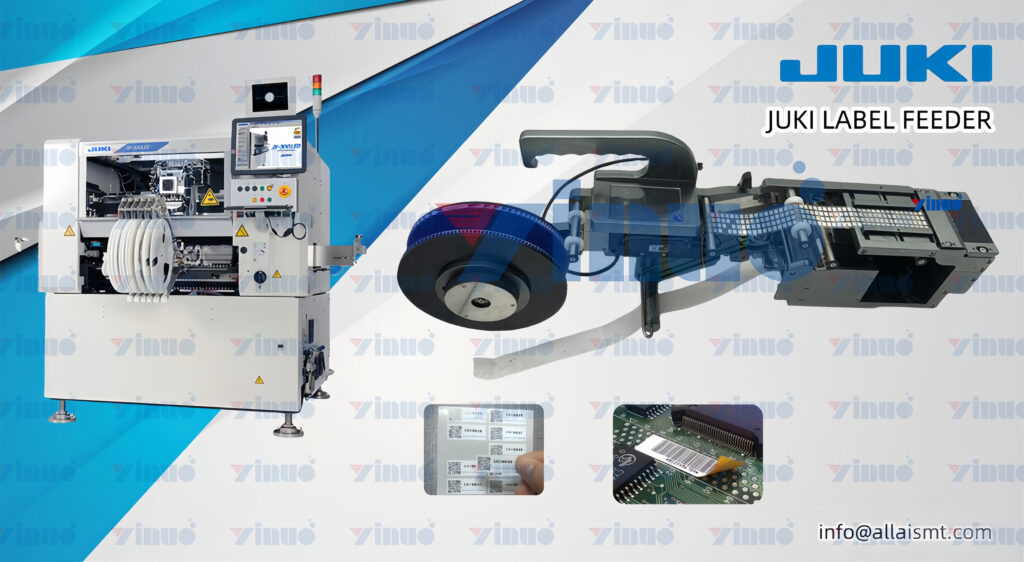Label Feeders: Reducing the Risk of Mislabeling
In the manufacturing world, precision and accuracy are paramount. Mislabeling, a seemingly small mistake, can have significant consequences, ranging from customer dissatisfaction to legal ramifications. In industries where compliance and traceability are critical, such as pharmaceuticals, electronics, and food and beverage, the risk of mislabeling must be minimized to protect both the consumer and the brand. One of the most effective tools in combating mislabeling is the use of label feeders. This article delves into how label feeders reduce the risk of mislabeling and contribute to a smoother, more reliable production process.
1. Understanding Mislabeling and Its Impacts
Mislabeling occurs when a product is tagged with incorrect, incomplete, or misleading information. This can involve anything from wrong barcodes, incorrect product names, or missing safety warnings. The consequences of mislabeling can be severe, including:
- Regulatory Penalties: Many industries are regulated by strict labeling laws. Mislabeling can result in fines, recalls, or even legal action.
- Customer Dissatisfaction: Incorrect labeling can lead to customer confusion, product returns, and a loss of trust in the brand.
- Operational Disruptions: If mislabeled products are identified too late in the production or distribution process, it can cause costly delays and waste.
Given these risks, ensuring accurate labeling is essential for maintaining product quality, safety, and brand reputation.
2. How Label Feeders Help Reduce Mislabeling
Label feeders are automated devices designed to apply labels to products with high precision and consistency. By integrating label feeders into the production line, manufacturers can significantly reduce the risk of mislabeling. Here’s how:
2.1. Automation of the Labeling Process
Manual labeling is inherently prone to errors, especially in high-volume or high-mix production environments. Operators might accidentally use the wrong label, apply it incorrectly, or miss a label entirely. Label feeders automate the entire labeling process, removing the human element from this critical step. By doing so, the likelihood of mislabeling is drastically reduced, ensuring that each product is labeled correctly and consistently.
2.2. Precision in Label Application
Label feeders are engineered for precision. They ensure that labels are applied in the correct position on every product, regardless of its size, shape, or surface texture. This is particularly important for products that require specific label placement for regulatory compliance or aesthetic purposes. With label feeders, the exact positioning of labels is guaranteed, eliminating the chance of misaligned or improperly applied labels.
2.3. Integration with Production Systems
Modern label feeders can be integrated with a company’s production and inventory management systems. This integration ensures that the correct label is used for each product, based on real-time data. For example, if a production line is switched from one product to another, the system automatically updates the label feeder to apply the correct labels for the new product. This seamless integration helps prevent errors that could arise from manual label changes, further reducing the risk of mislabeling.
2.4. Real-Time Monitoring and Error Detection
Many advanced label feeders come equipped with sensors and monitoring systems that can detect errors in real-time. These systems can identify issues such as missing labels, double labeling, or incorrect label orientation. If an error is detected, the system can halt the production line or flag the issue for immediate correction. This proactive approach ensures that potential labeling errors are caught and corrected before the products reach the next stage of production or distribution.
2.5. Flexibility in Labeling Different Products
In high-mix production environments where a variety of products are manufactured on the same line, the risk of mislabeling can be higher due to frequent product and label changes. Label feeders are designed to handle multiple label types and sizes, allowing for quick and easy changeovers between different products. This flexibility ensures that the correct label is applied to each product, even in a diverse production environment, reducing the risk of mislabeling.
3. Benefits Beyond Error Reduction
While the primary benefit of using label feeders is the reduction of mislabeling, there are several other advantages that these devices bring to the production process:
3.1. Increased Efficiency
By automating the labeling process, label feeders can significantly speed up production lines. This increased efficiency not only reduces labor costs but also minimizes the likelihood of bottlenecks caused by manual labeling.
3.2. Cost Savings
Reducing the risk of mislabeling can result in significant cost savings. Avoiding recalls, rework, and fines associated with labeling errors directly impacts the bottom line. Additionally, the efficiency gains from using label feeders contribute to overall cost reductions.
3.3. Enhanced Brand Reputation
Consistently accurate labeling helps maintain a brand’s reputation for quality and reliability. Customers trust that they are receiving the correct product with the correct information, which reinforces brand loyalty and customer satisfaction.
4. Conclusion
In an era where precision and compliance are non-negotiable, label feeders offer a robust solution for reducing the risk of mislabeling. By automating the labeling process, ensuring precise application, and integrating with production systems, label feeders help manufacturers maintain the highest standards of product accuracy and quality. The result is not only a reduction in costly errors but also the enhancement of brand reputation and customer trust. For any manufacturer serious about quality control and operational efficiency, investing in label feeders is a critical step towards minimizing mislabeling risks.


